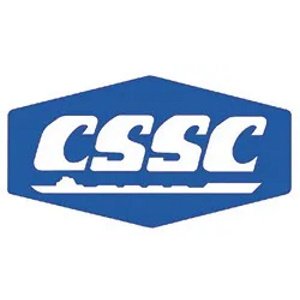CSSC Huangpu Wenchong Shipbuilding Co., Ltd. (HPWS) - Experts & Thought Leaders
Latest CSSC Huangpu Wenchong Shipbuilding Co., Ltd. (HPWS) news & announcements
Swiss marine power company - WinGD has secured further orders for its ammonia-fuelled X-DF-A engine design in the growing ammonia carrier market. The engines, to be built at Yuchai Marine Power Co, will be delivered for a total of seven 25,000m3 and 41,000m3 LPG/ammonia carriers ordered by Tianjin Southwest Shipping. The vessels will deploy 5- and 6-cylinder versions of the 52-bore X-DF-A engines and are scheduled to enter service from Q3 2026. New orders The new orders highlight WinGD’s growing stake in the gas carrier market The orders will be built by Huangpu Wenchong Shipbuilding, a shipyard with strong experience in the construction of small- and medium-sized gas carriers. The new orders highlight WinGD’s growing stake in the gas carrier market, which is a vital link in the emerging global supply chain for green ammonia, as well as a pioneering segment for the uptake of ammonia as marine fuel. Role of ammonia in the hydrogen economy WinGD's Director - Sales, Volkmar Galke, said, "The demand for gas carriers is growing rapidly as the central role of ammonia in the hydrogen economy is becoming clear." He adds, "WinGD has already reported multiple orders of its new X-DF-A engine in this segment, and these new orders – a result of our strong relationships in the Chinese shipping market – further the transition towards a sustainable shipping industry that can operate on the zero-carbon energy sources it carries." X-DF-A ammonia technology WinGD has been developing its X-DF-A ammonia technology since 2019, following a systematic approach that prioritises safety and a deep understanding of the fuel’s combustion characteristics. The concept has been granted approvals in principle from several classification societies, giving ship operators the assurances they need to deploy them safely, with the first engines set to enter service in 2026. WinGD has secured close to 30 orders to date for ammonia-fuelled X-DF-A engines, with sizes ranging from 52- to 72-bore, for vessels, including bulk carriers, gas carriers, container vessels, and oil tankers.
At the SMM trade fair in Hamburg, DNV awarded Huangpu Wenchong Shipbuilding Company (HPWS) three approval in principle (AiP) certificates for their innovative designs of three new ship types. Three new designs An ammonia-fueled 43,000 cbm midsize gas carrier (MGC) An ammonia-fueled SWAN 3,500 TEU container ship, and A LNG dual-fueled SWAN 1,300 TEU container ship with ice class. New-generation MGC features New-generation MGC features a wider beam compared to typical MGCs to gain larger cargo capacity The new-generation MGC features a wider beam compared to standard MGCs to achieve larger cargo capacity, and its ammonia fuel engine enables zero emissions, aligning with the International Maritime Organisation's (IMO) decarbonisation targets for 2050. The HPWS SWAN 3,500 TEU ammonia-fueled container ship is equipped with a Type C ammonia fuel tank, focusing on and enhancing the design's reliability in managing the toxic hazards associated with ammonia. In addition, the SWAN 1,300 TEU container ship is a new-generation ice-class feeder vessel specifically designed for intra-European operations, and with LNG fuel ensuring its alignment with decarbonisation pathways. Challenges in the maritime industry Han Jianbing, Vice General Manager of HPWS said: “These approvals are a testament to our shared commitment to meeting challenges in the maritime industry. We are deeply appreciative of DNV’s expertise, which has been instrumental in the development of many of our innovative vessels. With these new vessels, we will further strengthen our pioneering position in green fuels and other decarbonisation technologies.” Norbert Kray, DNV Senior Vice President and Maritime Regional Manager for Greater China said: “Congratulations to HPWS on achieving these important milestones. We deeply appreciate and value the trust you have in DNV in helping to bring out innovative designs that can drive shipping’s path towards greater sustainability." Decarbonisation journey Kray added: "As the world’s pioneering classification society, DNV is committed to contributing our expertise to support our customers in their decarbonisation journey.” HPWS is one of the mainstay shipyards under the China State Shipbuilding Co. The cooperation between DNV and HPWS dates back to 1996 and encompasses many ship types, including feeder vessels, bulk carriers, heavy-lift vessels, gas carriers and offshore supply vessels. To date, over 250 HPWS vessels have been classed with DNV, with some 20 currently on order.
Recently, a second-hand 2,800TEU vessel purchased by CULINES was delivered in Singapore and renamed M/V CUL MANILA. A new member thus joined the CULINES fleet. CULINES Chairman & CEO - Raymond Chen boarded the vessel in Singapore with his team and witnessed the delivery. Mr. Chen had a pleasant talk with the captain and the crew of CUL Manila and extended best wishes on behalf of the company. Second-hand vessels The purchase of this vessel could help to optimise the fleet structure and develop the network of CULINES CUL MANILA, aged 11 and in good condition, is a 2,800TEU container vessel built by Huangpu Wenchong and managed by Columbia Shipmanagement. Here are some particulars: LOA 212.6m; breadth 32.2m; depth: 20.3m; draught: 10.5m, could be deployed to IA and TP trades. The purchase of this vessel could help to optimise the fleet structure and develop the network of CULINES. CUL MANILA container vessel Upon delivery, CUL MANILA will head for Port Klang to get fully loaded and sail to Nansha to phase into the South China–India CIS service, a joint service with RCL, PIL, and IAL with the rotation Nansha / Shekou / Singapore / Port Klang / Nhava Sheva / Mundra / Port Klang / Haiphong / Nansha. With the joining of CUL MANILA, the CULINES fleet now operates 32 vessels, 4 owned and 28 chartered, with a total capacity of 82,070TEU. CUL MANILA is the first second-hand ship CULINES purchased this year, and her sister CPAE MARIN would also be delivered in July. With more coming deliveries of newbuilding and second-hand vessels, the ratio of CULINES owned capacity will further increase.





